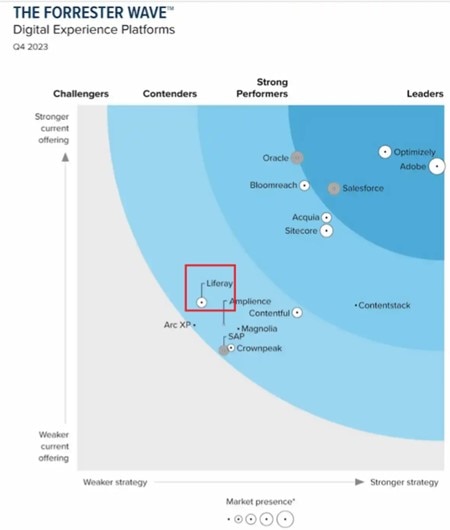Adobe Experience Manager (AEM)
Definition
AEM is a comprehensive content management solution for building websites and forms. AEM makes it easy to manage your marketing content and assets.
AEM is a perfect blend of content management system and Digital Asset Management, enabling users to create, manage, and deliver content across multiple channels. AEM development services are best for businesses that need to create and manage digital presence across websites and social media.
Currently, AEM has great market presence across various industry domains such as BFS (Banking and Financial Services), FMCG (Fast-Moving Consumer Goods), Travel, Healthcare, Investment, Insurance, Manufacturing, Automobile etc.
AEM’s extensive capabilities assist customers in growing their business with:
- Ease of use and readily available features (CORE Components, XF, content fragments, Editable templates etc.) provides a Faster Time to Market
- Faster delivery of higher quality content with Omnichannel experience
- Better engagement for the end-users through Personalization for any customer segment energized/driven with/by GenAI capabilities
- Increased users with higher traffic and lower load times with Auto Scalability
- High availability
- 24/7 Customer and community support
- Marketing Cloud capabilities (Adobe Analytics, Adobe Target, Adobe Commerce, Adobe Campaign, etc.)
- Seamless integrations with external tools are easy and configurable
- Robust ecosystem
- Performance-first architecture
- A secure, cloud-native platform
- Streamlined workflows
- Standard tools with easy training
- Flexible authoring tools
- Front-end flexibility
- Modular, reusable content
- Multi-site management
- Headless Content Delivery
Use-case
Bajaj Mall is a hyperlocal e-commerce marketplace that provides Bajaj Finance's Dealer Network with an additional channel to sell their products. Currently, there are 1.35 Lacs+ SKUs, 40k+ sellers, and over 50 categories on the platform where major categories include consumer durables, mobiles, lifestyle products, twowheelers, four-wheelers, used cars etc. All consumer durables, mobiles and lifestyle products are offered on a no-cost EMI basis through Bajaj Finance's EMI Card.
AEM has helped achieve auto-scalability which has enabled its presence in over 7,000 cities. Easy integration with Adobe Commerce has leveraged over 1,27,000 catalogues and the active dealer or seller count increased to 50,000.

Positioning
According to the Gartner Magic Quadrant 2024 and the Forrester Q4 2023 report on Digital Experience Platforms, Adobe AEM has been positioned as a Leader in CMS for the past 7 years.


Who should Use AEM?
AEM is predominantly used by enterprise-level businesses due to its robust features and scalability. It is best suited for large enterprises that require a comprehensive CMS and digital experience platform with advanced features for content and digital asset management, personalization, and multi-channel delivery. AEM is highly scalable and flexible but it comes with a premium price tag.
Additionally, AEM is best for the following businesses:
- Media & publishing companies can create, manage, and deliver personalized content and customer experiences to their users. AEM’s DAM (Digital Asset Management) provides a seamless experience across websites and social media.
- With unified data, dynamic content, and AI features, retail companies can manage numerous product pages and digital assets across multiple websites and channels.
- AEM believes that the learning experience doesn’t start on campus but online. Educational institutions can digitally transform their business by managing digital courses for students and faculty across multiple channels.
- AEM allows government agencies to deliver digital experiences and services, increase citizen engagement, and build trust through personalized content.
- Non-profit organizations that need to create and manage digital content for fundraising and outreach across multiple channels can leverage the features of Adobe Experience Manager.
- Real estate companies can use AEM to effectively provide property listings and information. Businesses can offer digital experience across multiple websites, apps, and channels.
- Professional services providers can consult, architect, implement, and adopt AEM to create and deliver personalized content and services to clients.
Liferay
Definition
Liferay is an emerging category of enterprise software designed to meet the needs of companies undergoing digital transformation.
Liferay is a comprehensive platform with multiple features and functionalities to manage the entire customer experience. Liferay portal development services are ideal for businesses that want to create a seamless, personalized customer experience across multiple touchpoints and channels.
Use-case

SkyTV is a top 30 New Zealand-based digital broadcaster and telecom provider connecting over 1 million customers with the entertainment they love on any device they desire.
SkyTV aimed to empower their users in making purchasing decisions, however their on-premises monolithic system was not auto-scalable, which hindereed customer self-service.
With Liferay, customer self-service of SkyTV increased by 140%, cart acquisition increased to 7% and the Liferay Experience Cloud helped them achieve auto-scaling, enabling SkyTV to meet increased demand during peak times.
Positioning
According to Gartner Magic Quadrant 2024 and Forrester Q4 2023, Liferay is one of the niche players amongst available CMS options and remains a contender among existing Digital Experience Platforms.


Who should use Liferay?
Liferay is often preferred by medium to large sized businesses or organizations looking for a versatile and cost-effective CMS solution. It is ideal for large organizations seeking an enterprise portal solution with content management and collaboration tools. Liferay is highly customizable and scalable, making it suitable for complex intranet and extranet projects. It offers both a free community edition and a paid enterprise edition.
Additionally, Liferay is best for the following businesses:
- The Liferay portal is an adequate solution for eCommerce businesses. It offers a seamless and personalized customer experience across multiple channels, such as websites, mobile apps, social media, and email.
- It is ideal for banking and financial services providers. Liferay portal development offers financial services solutions for clients, advisors, and employees.
- Liferay enables healthcare businesses to meet digital transformation demands by providing customizable and scalable solutions for patients and providers.
- Liferay DXP provides portal solutions such as B2B trade, dealer and supplier portals, self-service customer portal, and integrated ERP, PIM, and CRM platforms for manufacturing companies.
- With DXP, telecom businesses can meet expectations, improve accessibility, drive customer engagement, and take advantage of customer insights.
- Liferay can be a suitable portal solution for hospitality and travel businesses. It offers multiple features, including onboarding, Commerce Payment Method, optimized search, SSO booking services, and more.
- Liferay provides digital solutions for agents, staff, and policyholders, allowing Insurance companies to set up a customer-centric value chain for their modern businesses.
Sanity
Definition
Sanity is a headless, real-time CMS where the editor is an open-source React-based construction kit, and the backend is a graph-oriented cloud datastore with a globally distributed CDN.
Use-case
Publishing rich multimedia and textual content across diverse marketing and e-commerce channels.

PUMA is one of the world’s leading sport brands, designing, developing, selling, and marketing footwear, apparel, and accessories. Their goal was to build a content engine on top of Salesforce, serving as the commerce engine and repository for PUMA’s product catalog and related content, such as images and videos.
Sanity helped PUMA build seamless campaign creation and publishing capabilties for more immersive product experiences and a structured content ecosystem capable of supporting future innovation.
To date, the PUMA team has created more than 500 category landing pages, over 4,000 hero banners, staged over 100 campaigns, and created more than 55,000 pieces of reusable content, all within Sanity.
Positioning
Sanity is not positioned either in Gartner Magic Quadrant 2024 or in Forrester Q4 2023 Digital Experience Platform report. However, according to the JAMStack Community Survey 2022, Sanity has the highest satisfaction score among the content platforms.
Who should use Sanity?
As a headless CMS, Sanity is preferred by the small to mid-sized organizations that want quick websites with intricate content relationships, collaborative workflows, and real-time content creation. Its structured content modeling, real-time collaborative editing, and customizable schema design cater to the needs of content-rich applications and teams aiming for seamlessly collaboration.
Sanity is well-suited for developers and content creators needing structured content and real-time updates. It offers high flexibility with its API-first approach and customizable schemas. It is scalable and has a growing community, with both free and paid plans available.
Strapi
Definition
Strapi, one of the leading open-source headless CMS platforms, is revolutionizing the way websites and applications handle content. With its flexible architecture and powerful features, Strapi empowers developers and content creators to build and manage digital experiences like never before.
Use-case

The Societe Generale needed to develop a fully functional training site within a few months. Strapi enabled the business to build their website with ease of use, customization capabilities, and interface. By leveraging Strapi's core functionalities, they quickly and efficiently drafted and launched the site.
Positioning
Strapi is not positioned either in Gartner Magic Quadrant 2024 or in Forrester Q4 2023 Digital Experience Platform report.
Who should use?
Strapi is an API-based headless CMS that is a good choice for projects requiring extensive control over content management and delivery processes. Strapi has a large and active community of developers, providing many resources to help you get started and troubleshoot issues.
As an open-source headless CMS, Strapi is developer-friendly and easy to set up. It offers high flexibility with its plugin ecosystem and supports various databases. It is cost-effective for small to medium-sized projects and has an active open-source community, with enterprise support available for paid plans.
Comparison between AEM, Liferay, Sanity and Strapi
Features | AEM | Liferay | Sanity | Strapi |
Digital Asset Management (DAM) | Yes | Yes | No | No |
Free Trial | No | Yes | Yes | Yes |
Market segments (Large/Small Business) | Large size | Mid to large size Big | Small to mid-size | Small size |
Built -Tech | Java | Java | JS, React JS | Node.js |
Hosting | Paas/Saas | PaaS/SaaS/Self-Hosted | SaaS | PaaS/Self Hosted |
Multi-databases support (SQLite, MySQL, Postgres) | external integration | external integration | Schemaless DB | configured while setup |
Cost | High | Medium | Low | Low |
Real-Time Editing and collaboration (multiple teams editing simultaneously) | Yes, OOTB | No | Yes | No |
Technical skills required for Authoring | No | No | No | Yes |
Versioning | Yes | Yes | yes | No |
References












